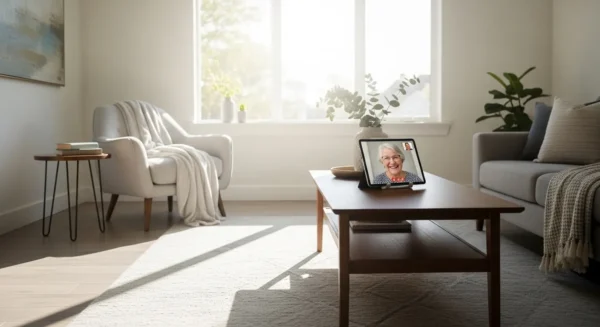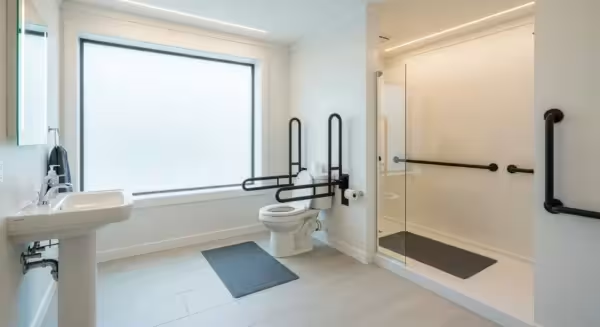
Introduction: Taking Control of Your Finances in Retirement
For many seniors, their home is not just a place of cherished memories; it is their single largest financial asset. Deciding to sell that home is a monumental step, often driven by the desire to simplify life, reduce expenses, and unlock the equity you have built over decades. This process, often called downsizing, is more than just moving—it is a significant financial event that can shape the quality and security of your retirement years.
Making this transition successfully requires careful planning and a clear understanding of the financial landscape. It is an opportunity to take control, reduce your financial burdens, and position yourself for a more comfortable future on a fixed income. However, it also comes with potential pitfalls, from tax implications to navigating a complex real estate market. This guide is designed to empower you with the knowledge you need. We will demystify the process, provide actionable real estate tips, and help you protect the hard-earned value of your home.

Understanding the Financial Basics of Selling Your Home
Before you place a “For Sale” sign in your yard, it is crucial to understand the key financial concepts that will impact your bottom line. Knowing these rules can save you thousands of dollars and prevent unexpected surprises down the road.

Capital Gains and the Home Sale Exclusion
The most important financial topic to understand is capital gains tax. A capital gain is the profit you make from selling an asset, in this case, your home. It is calculated by taking the sale price and subtracting your “basis.” Your basis is typically the original purchase price plus the cost of any major capital improvements you made over the years (like a new roof or a kitchen remodel, not routine maintenance).
Example: You bought your home for $80,000 thirty years ago. Over the years, you spent $20,000 on a new addition. Your basis is $100,000 ($80,000 + $20,000). If you sell the home for $450,000, your capital gain is $350,000 ($450,000 – $100,000).
Fortunately, the government provides a generous tax break for homeowners. It is called the Home Sale Exclusion. This rule allows you to exclude a significant portion of your capital gain from taxes, provided you meet certain criteria. The two main requirements are:
1. Ownership Test: You must have owned the home for at least two of the five years leading up to the sale.
2. Use Test: You must have lived in the home as your primary residence for at least two of the five years leading up to the sale.
If you meet these tests, the exclusion amounts are:
- $250,000 for a single filer.
- $500,000 for a married couple filing a joint tax return.
Let’s apply this to our example. If you are a single filer with a $350,000 gain, you can exclude the first $250,000. You would only owe capital gains tax on the remaining $100,000. If you are a married couple filing jointly, you can exclude up to $500,000. In that case, your entire $350,000 gain would be tax-free. This exclusion is a powerful tool for seniors selling a long-term residence. For more detailed information on your specific tax situation, the best source is always the IRS.
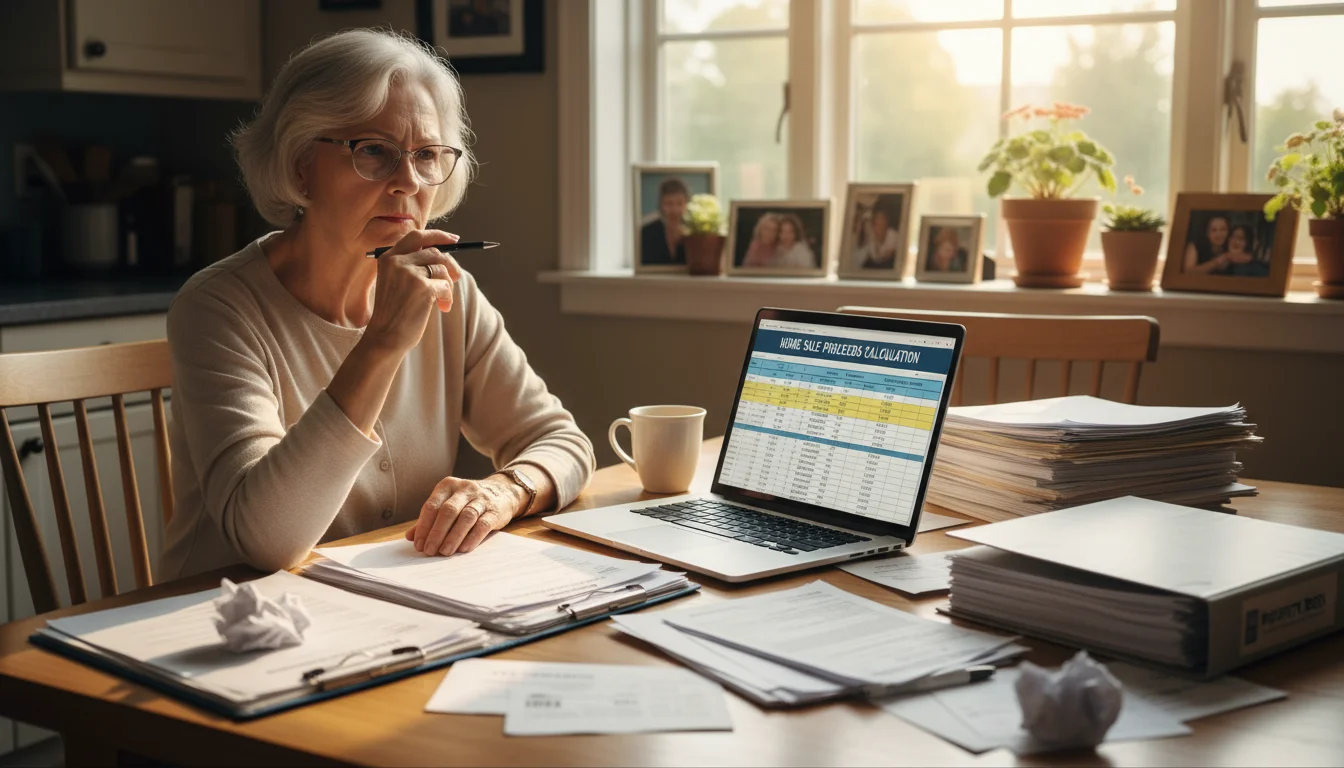
Calculating Your Net Proceeds
The price your home sells for is not the amount of money you will walk away with. It is essential to estimate your net proceeds to plan your next steps, whether that is buying a smaller home, moving into a senior housing community, or investing the funds. To calculate your net proceeds, start with the sale price and subtract the following:
- Real Estate Commissions: Typically 5-6% of the sale price, split between the buyer’s and seller’s agents.
- Closing Costs: These can include transfer taxes, attorney fees, and other administrative costs, often totaling 1-3% of the sale price.
- Remaining Mortgage Balance: You must pay off any outstanding mortgage on the property.
- Staging and Repair Costs: The money you spent preparing the home for sale.
Example: On a $450,000 sale, you might have $27,000 in commissions (6%), $9,000 in closing costs (2%), and a $50,000 remaining mortgage. Your estimated net proceeds would be $364,000 ($450,000 – $27,000 – $9,000 – $50,000), before accounting for any repair costs.

Actionable Strategies and Money-Saving Tips
Selling your home can feel overwhelming. By breaking it down into manageable steps, you can approach the process with confidence and clarity. Here are our top real estate tips for seniors preparing to sell.
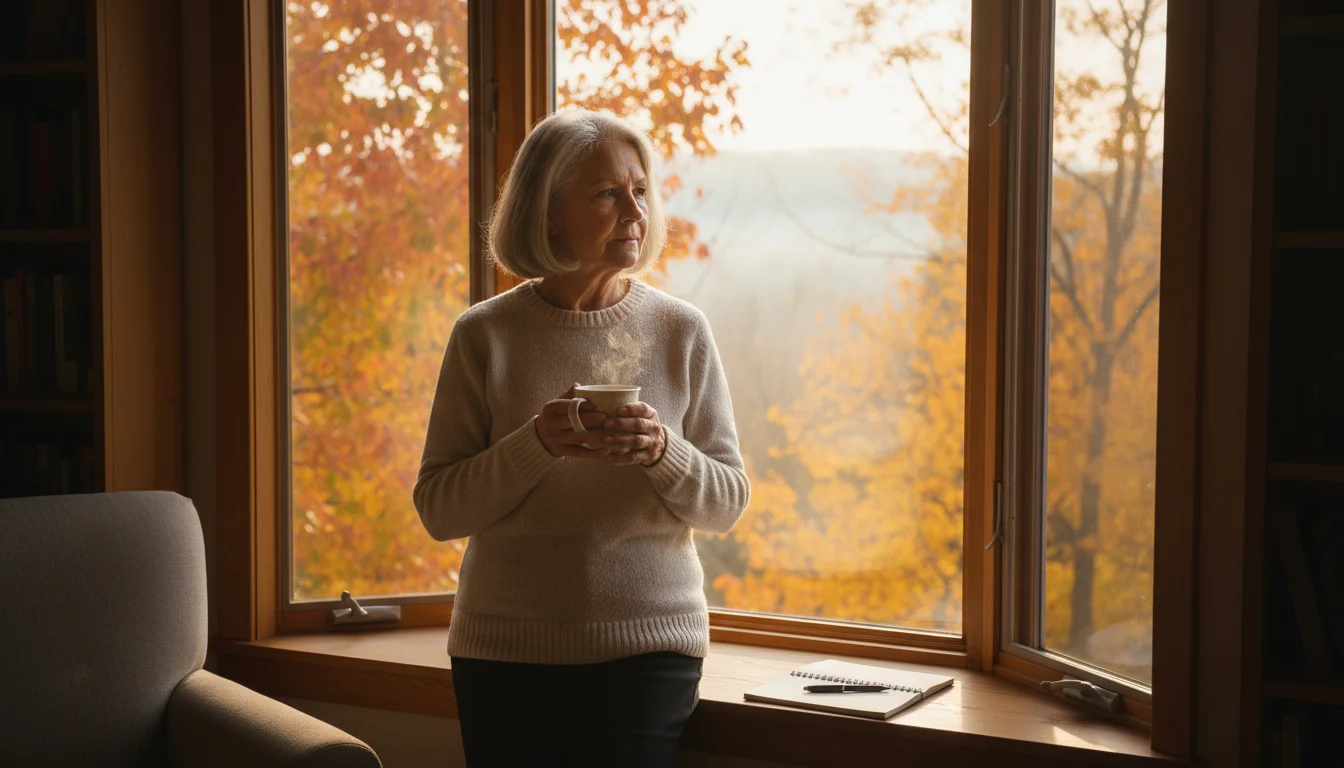
Step 1: Get Clear on Your Goals and Timing
Before any practical work begins, start with the “why.” Why are you selling? Are you looking for a smaller property with less maintenance, a single-story home to avoid stairs, or to move closer to family? Defining your goal will guide all subsequent decisions. Consider the financial impact as well. Will the proceeds from the sale need to fund your living expenses, or will they be used to purchase your next home? A clear financial plan is your best first step.
Timing the market is difficult, but timing your sale for the right season can help. Spring (March to May) is traditionally the busiest and most competitive season for home sales, often resulting in higher prices. However, selling in the fall can also be effective, as buyers at that time are often more serious. Avoid selling during the holiday season if possible, as activity tends to slow down.
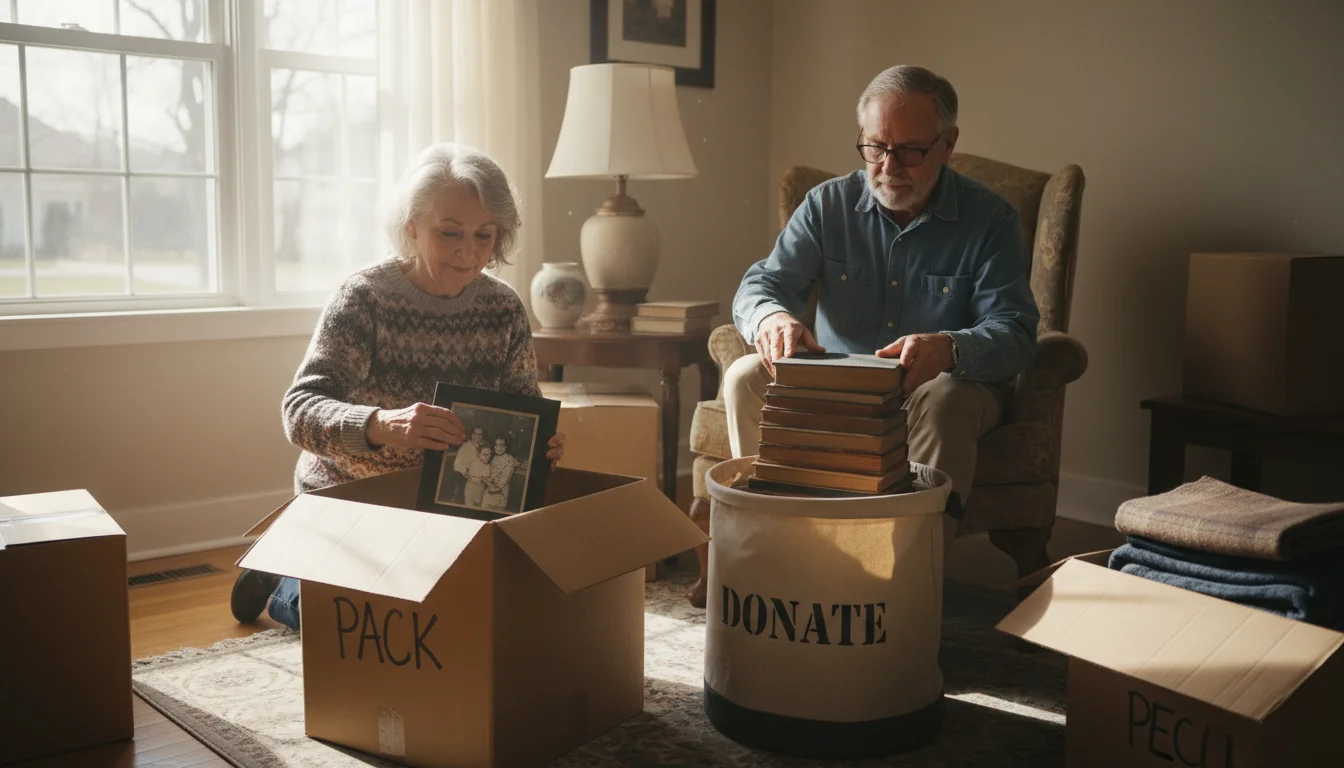
Step 2: The Three “D’s” – Declutter, Depersonalize, and Deep Clean
After living in a home for many years, it is natural to accumulate a lifetime of belongings. For potential buyers, however, this can feel like clutter. Your goal is to help buyers envision themselves living in the space. This is where home staging principles come into play.
- Declutter: This is the most challenging but most important task. Go through every room, closet, and cabinet. Sort items into four categories: Keep, Donate, Sell, and Discard. This process can be emotional, so give yourself plenty of time. Renting a small storage unit for excess furniture or boxes can make your home feel much larger and more open.
- Depersonalize: Buyers need to see the house, not your life story. Pack away family photos, personal collections, and bold, taste-specific artwork. This creates a neutral canvas that allows buyers to project their own lives onto the home.
- Deep Clean: A sparkling clean home signals to buyers that the property has been well-maintained. Clean everything from the baseboards to the ceiling fans. Pay special attention to kitchens and bathrooms. Consider hiring a professional cleaning service for a one-time deep clean; it is often money well spent.
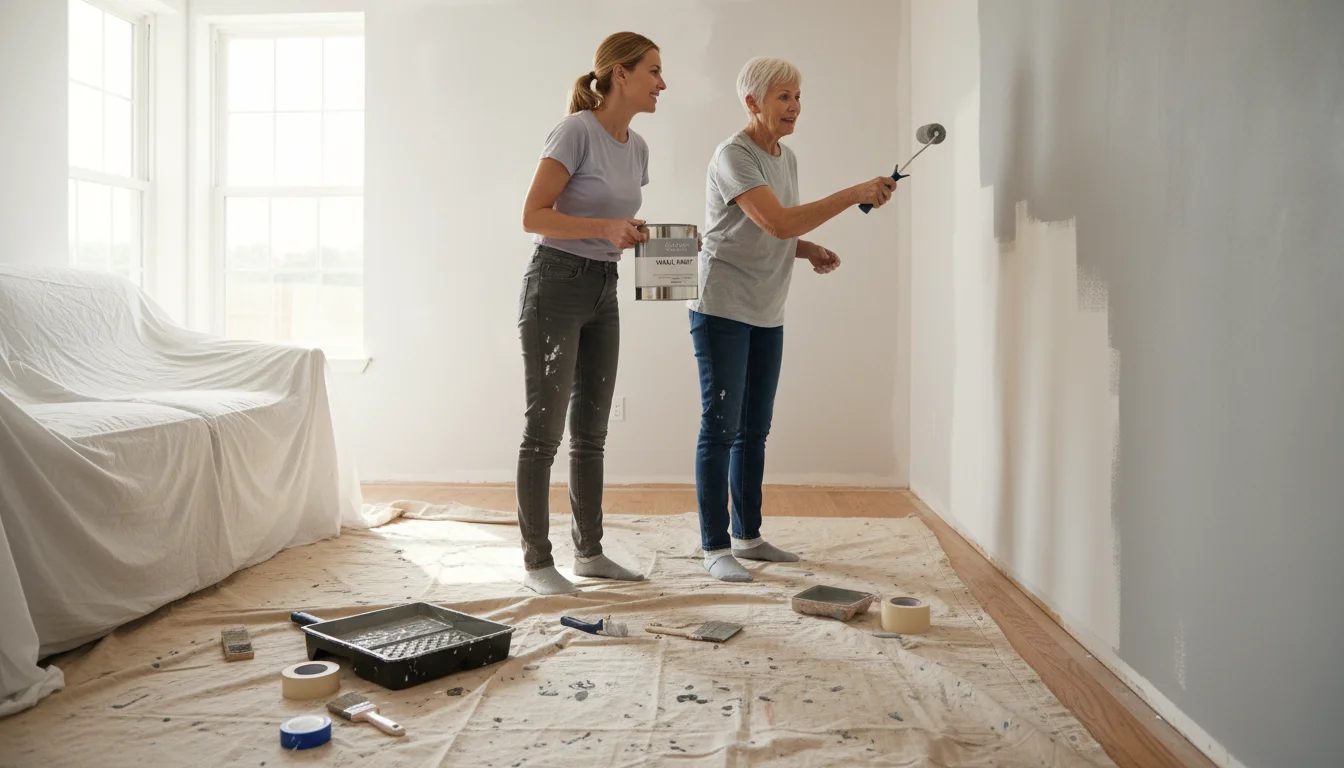
Step 3: Make Smart Repairs, Not Costly Renovations
One of the biggest mistakes sellers make is over-investing in major renovations right before a sale. You are unlikely to recoup the full cost of a $50,000 kitchen remodel. Instead, focus on small, high-impact repairs and cosmetic updates.
Focus on these areas:
- Fix the Obvious: Repair leaky faucets, replace cracked tiles, fix sticky doors, and replace burned-out lightbulbs. These small issues can make buyers think the home has been neglected.
- Fresh Paint: A fresh coat of neutral-colored paint (think light gray, beige, or off-white) is one of the cheapest and most effective ways to make a home look clean, bright, and updated.
- Curb Appeal: The first impression is critical. Mow the lawn, trim overgrown shrubs, plant some fresh flowers, and paint the front door. A welcoming exterior invites buyers inside.

Step 4: Find a Real Estate Agent Who Understands Your Needs
A good real estate agent is your most valuable partner in this process. Do not just go with the first person you meet. Interview at least three agents. Look for someone who is not only experienced in your local market but also has experience working with seniors.
Consider looking for an agent with a Seniors Real Estate Specialist (SRES) designation. These agents have received special training on the financial and emotional challenges that senior clients face when selling a long-term home. They can be a fantastic resource for connecting you with other professionals, from movers to estate planners.
Ask potential agents for a comparative market analysis (CMA) to see what similar homes in your area have sold for recently. This will help you understand a realistic price range for your property. A good agent will be honest about your home’s value, not just tell you a high number to get your listing.
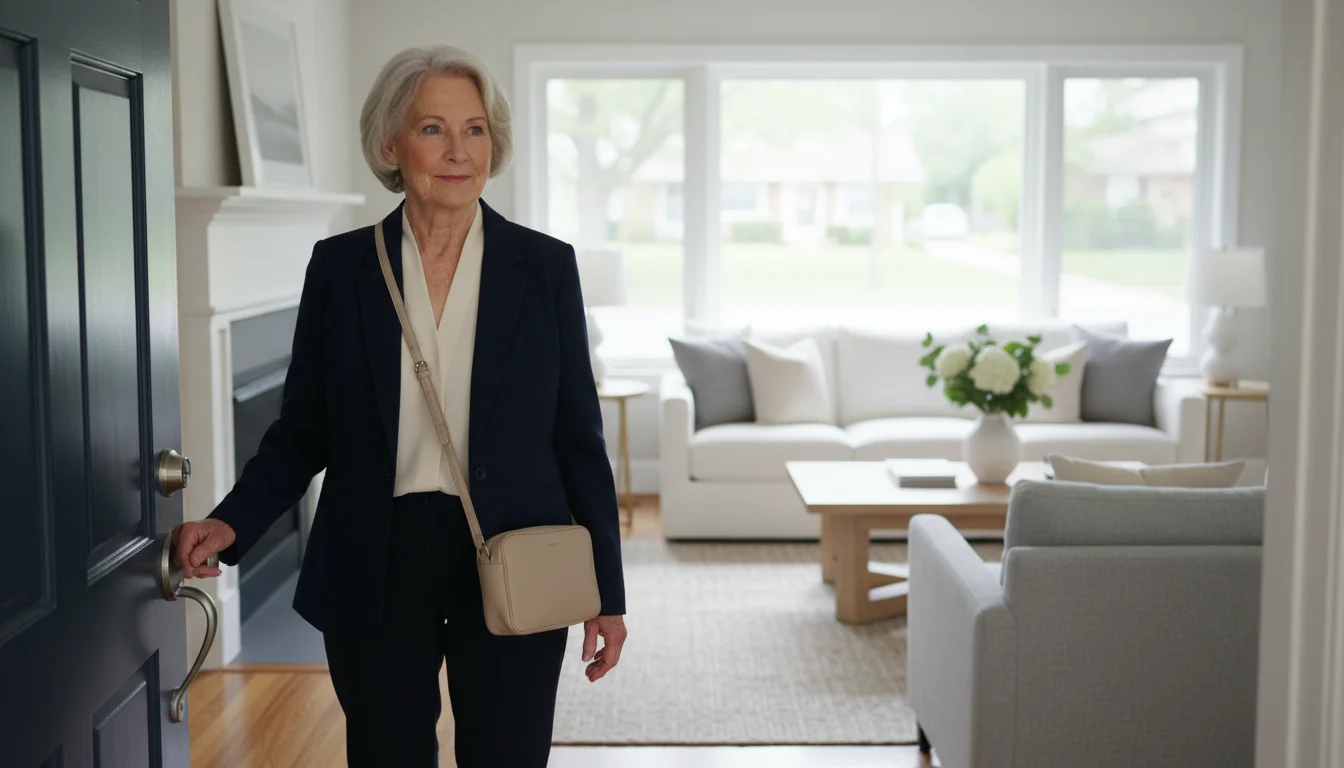
Step 5: Price It Right and Prepare for Showings
Pricing your home correctly from the start is crucial. Overpricing can cause your home to sit on the market for months, creating a stigma that something is wrong with it. Your agent’s CMA will be your guide. Trust the data, not your emotional attachment to the home.
Once your home is listed, you need to be prepared for showings. This can be disruptive, so have a plan. Keep the house tidy at all times. Have a place you can go during showings, like a coffee shop, library, or a friend’s house. It is best if you are not present when potential buyers tour the home, as it allows them to speak freely and feel more comfortable.

Financial Red Flags and Scams to Watch Out For
Selling a home involves large sums of money, which unfortunately attracts scammers. As a senior, you may be specifically targeted by dishonest individuals. Awareness is your best defense. For more resources on protecting yourself, visit the FTC and the Consumer Financial Protection Bureau (CFPB).
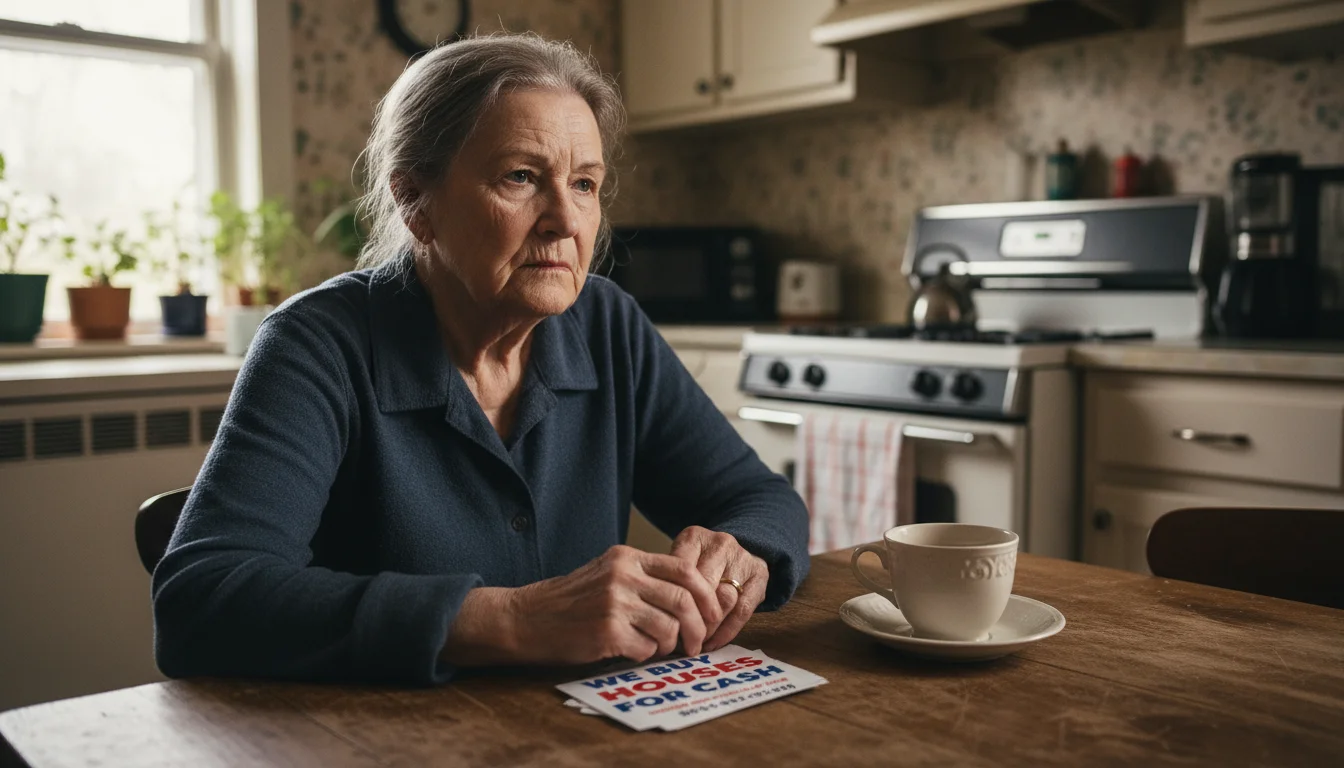
1. “We Buy Houses for Cash” Predators
You have likely seen the signs on telephone poles or received unsolicited postcards. While some cash-buying companies are legitimate, many are predatory. They target homeowners who may be in a hurry or overwhelmed by the selling process. Their tactic is to offer a quick, “as-is” cash sale, but the offer is often far below market value—sometimes 50-70% of what your home is actually worth.
Warning Signs:
- An unsolicited, high-pressure offer to buy your home immediately.
- They discourage you from getting your own appraisal or consulting a real estate agent.
- The offer seems too good to be true or is contingent on confusing terms.
How to Protect Yourself: Never sign anything under pressure. Always get an independent valuation of your home from a licensed real estate agent or appraiser before considering any offer.
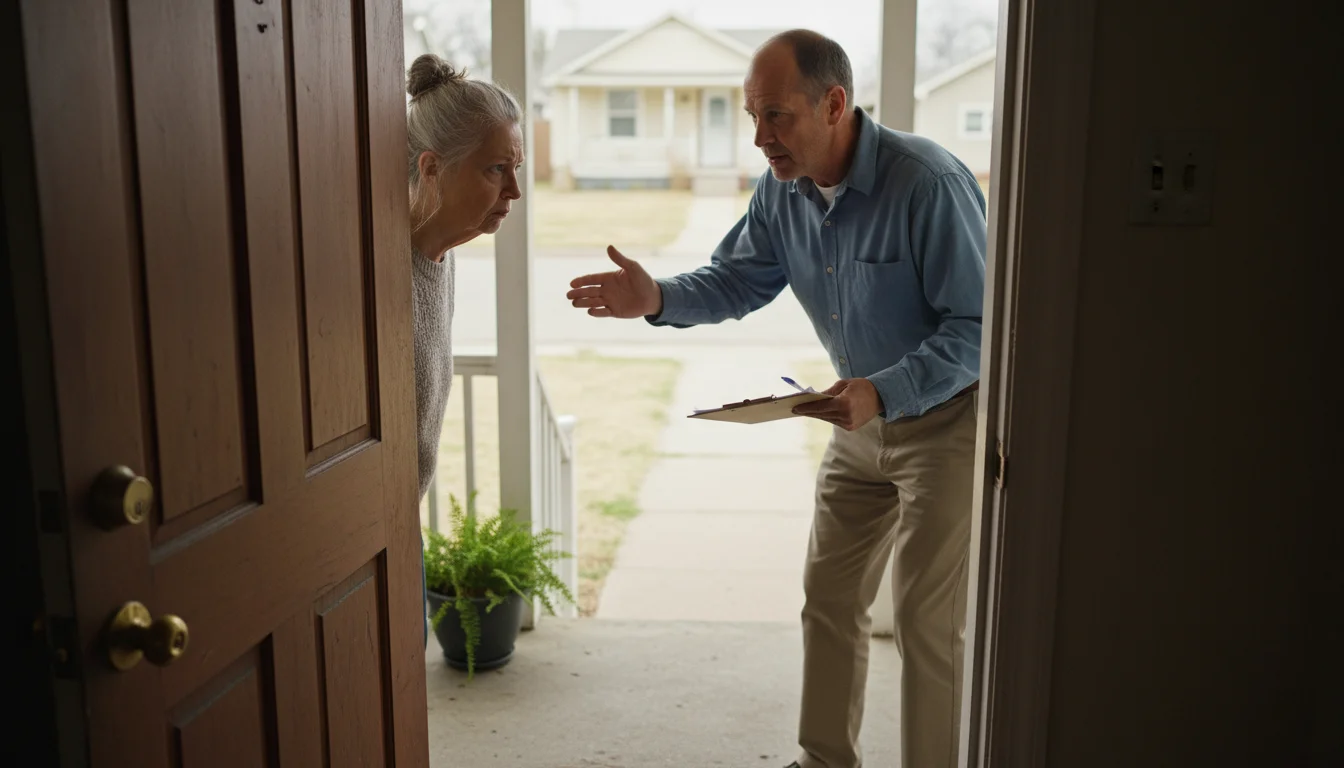
2. Home Improvement and Staging Scams
Before putting your home on the market, you might hire a contractor for repairs or a stager to help it look its best. Be cautious. Scammers posing as contractors may show up at your door offering a great deal on a project like paving your driveway or repairing your roof. They often demand a large upfront payment in cash and then either perform shoddy work or disappear with your money.
Warning Signs:
- The contractor is unlicensed or cannot provide references.
- They demand full payment or a very large cash deposit before any work begins.
- They use high-pressure tactics, such as claiming the “special price” is only available today.
How to Protect Yourself: Only work with licensed and insured contractors. Get multiple written estimates for any job. Never pay in full upfront. A reasonable deposit is typically 10-30%.

3. Forgetting About the Tax Implications
This is less of a scam and more of a costly mistake. Many seniors who have lived in their homes for decades have seen enormous appreciation in value. They may be unaware of the capital gains tax and the exclusion rules. Failing to plan for this can result in a surprise tax bill that eats into your retirement nest egg. It is a critical part of the financial planning for your sale.
How to Protect Yourself: Well before you sell, consult with a tax professional or a certified financial planner. They can help you calculate your home’s basis, estimate your potential capital gains, and confirm that you qualify for the full exclusion. This planning can save you tens of thousands of dollars.

A Financial Checklist for Selling Your Home
To keep the process organized, follow this simple checklist. Think of it as your roadmap from the decision to sell to the closing table.
First, make your plan. Assess your financial situation and determine your goals for downsizing. Decide where you want to live next and what your budget will be for your new senior housing arrangement. This is also the time to consult a financial advisor to discuss how the proceeds will fit into your overall retirement plan.
Second, prepare your property. Begin the process of decluttering, cleaning, and making necessary repairs. Focus on curb appeal and cosmetic touch-ups that offer the best return on investment. This is the physical work that sets the stage for a successful sale.
Third, assemble your professional team. Interview and hire a qualified real estate agent, preferably one with experience helping seniors. You should also identify a real estate attorney and have a tax professional ready to consult regarding any capital gains questions.
Fourth, market and show your home. Work with your agent to set a competitive price. Have professional photos taken and make sure your home is clean and accessible for showings. Be flexible and responsive to showing requests to attract the largest possible pool of buyers.
Finally, navigate the closing process. Once you receive an offer, lean on your agent and attorney to negotiate the terms and navigate any contingencies, such as a home inspection. Gather all necessary paperwork and prepare for the final transfer of ownership. Celebrate a successful transition to the next chapter of your life.
Disclaimer: This article is for informational purposes and is not a substitute for professional financial or tax advice. Consult with a certified financial planner or tax professional for guidance on your specific situation.

Frequently Asked Questions
How will selling my home affect my Social Security or Medicare?
For most people, selling a primary residence will have no impact on their Social Security or Medicare benefits. The proceeds from the sale of your main home are generally not considered “income” for the purposes of calculating your Social Security benefits or your Medicare premiums. It is viewed as the conversion of one asset (your house) into another (cash). It is always wise to confirm with a financial advisor, but typically you do not need to worry. For official information, you can always visit SSA.gov and Medicare.gov.
What is the capital gains tax exclusion, and how does it work for a married couple?
The capital gains tax exclusion allows you to avoid paying taxes on a large portion of the profit from your home sale. If you have owned and lived in the home as your primary residence for at least two of the last five years, you can exclude up to $250,000 of the gain if you are single, or up to $500,000 if you are married and file a joint tax return. This means a married couple could sell a home with a profit of $500,000 and owe no federal capital gains tax.
Should I do a major kitchen or bathroom renovation before selling?
In most cases, no. While a brand-new kitchen is appealing, you will rarely get a 100% return on your investment. A major renovation is expensive, time-consuming, and stressful. Worse, your specific design choices might not appeal to potential buyers. It is much more cost-effective to focus on smaller, cosmetic updates: paint the cabinets, install new hardware, update the light fixtures, and ensure everything is spotlessly clean.
What are the most important things to fix before listing my home?
Focus on functional issues and glaring cosmetic problems. The top priorities should be anything related to water (leaky roofs, dripping faucets, running toilets), safety (faulty electrical outlets, broken steps), and obvious cosmetic flaws (peeling paint, stained carpets, broken window panes). These are red flags for buyers and home inspectors, so addressing them upfront prevents problems during negotiations.
Where is the best place to put the money after I sell my home?
This depends entirely on your personal financial situation and goals. If you need the money for living expenses soon, you will want to keep it in a safe, accessible account like a high-yield savings account or a certificate of deposit (CD). If you are purchasing another home, the funds will be used for that. If the money is intended for long-term growth or to generate income, you might consider a diversified investment portfolio or an annuity. This is a critical decision that should be made with the help of a trusted financial advisor who can create a strategy tailored to your needs.
For expert guidance on senior health and finance, visit National Institute on Aging (NIA), Centers for Disease Control and Prevention (CDC) and Medicare.gov.
|
Fact-Checked Content
Our editorial team reviews all content for accuracy and updates it regularly. Learn about our editorial process →
|

